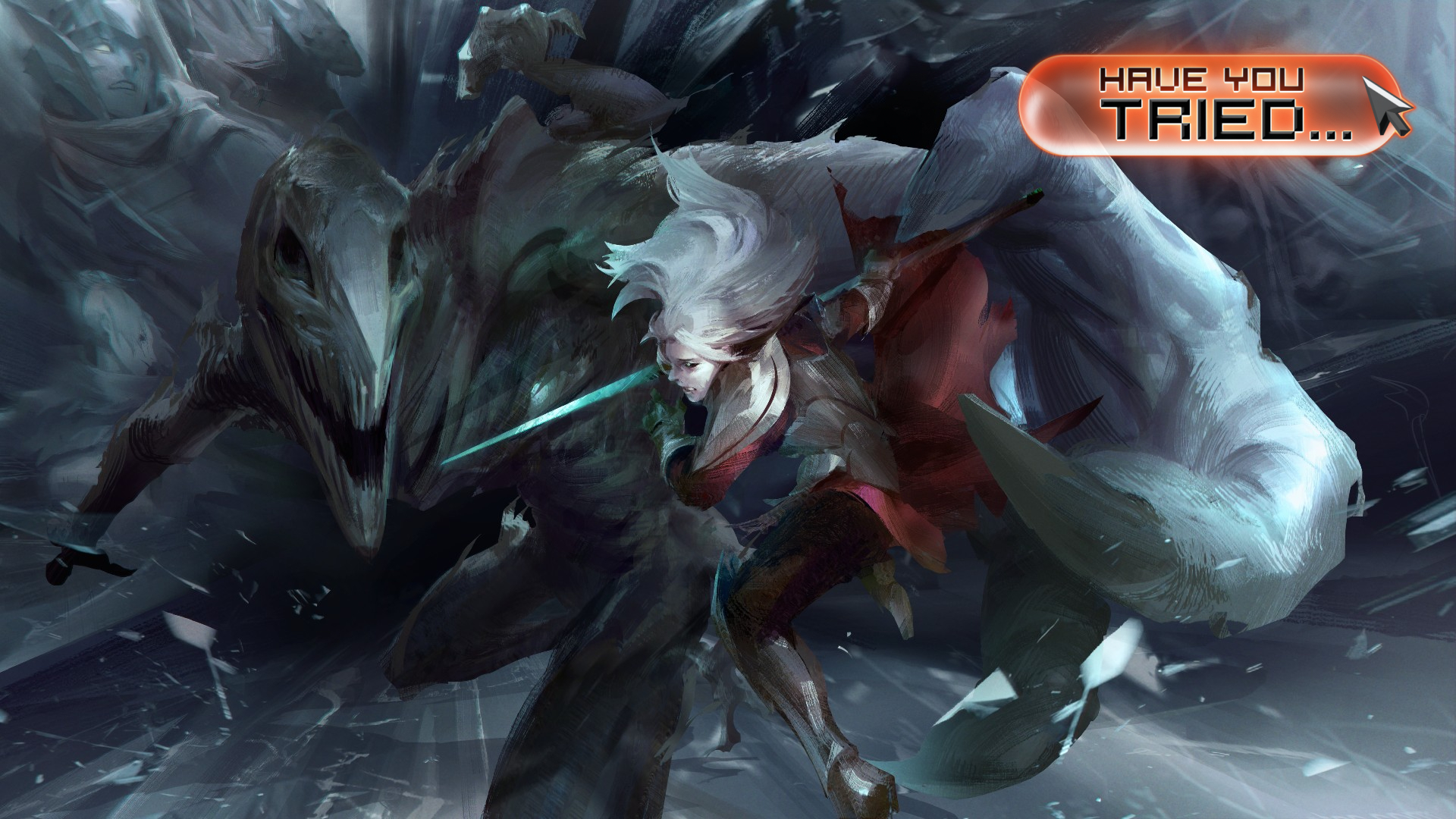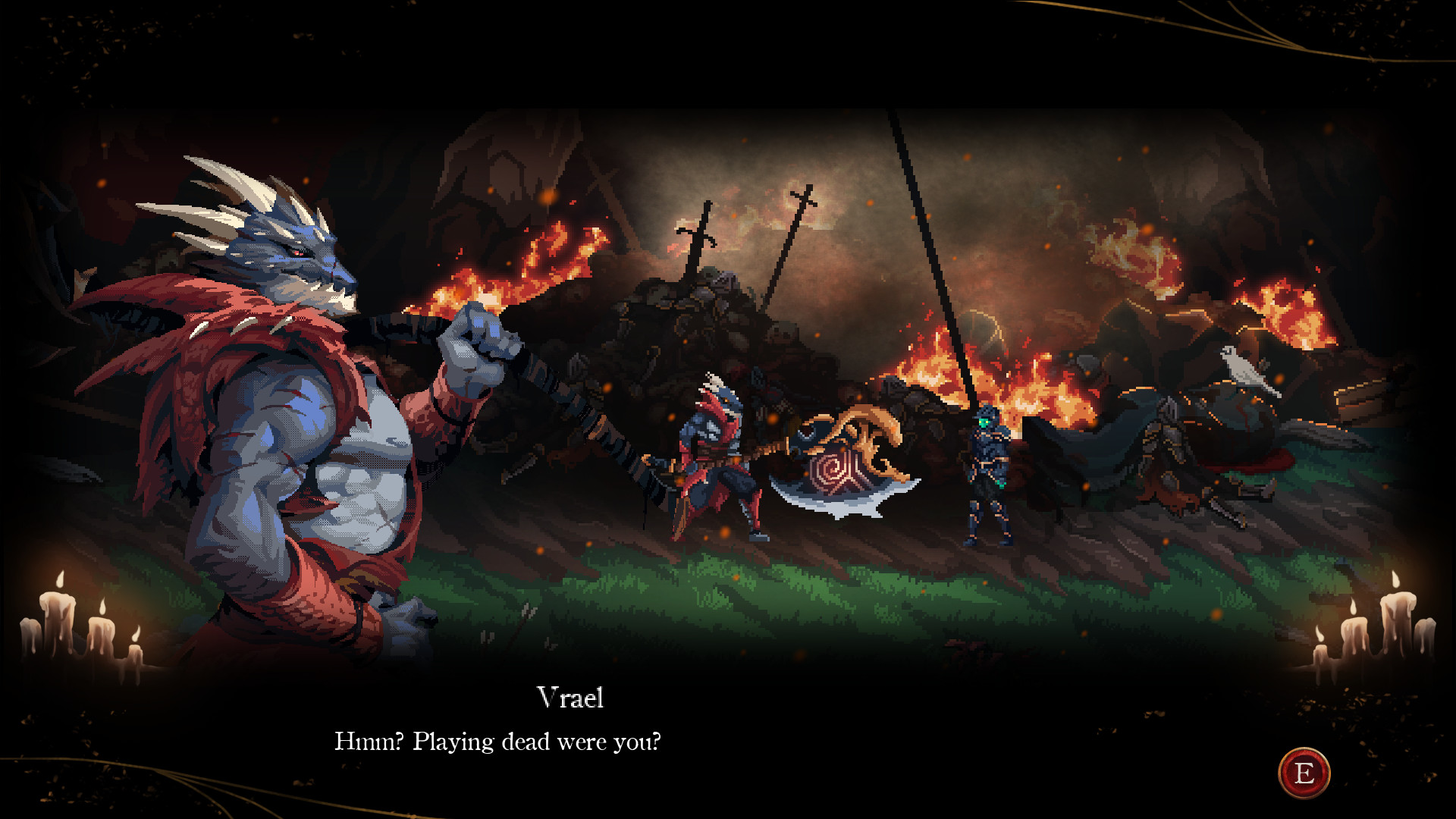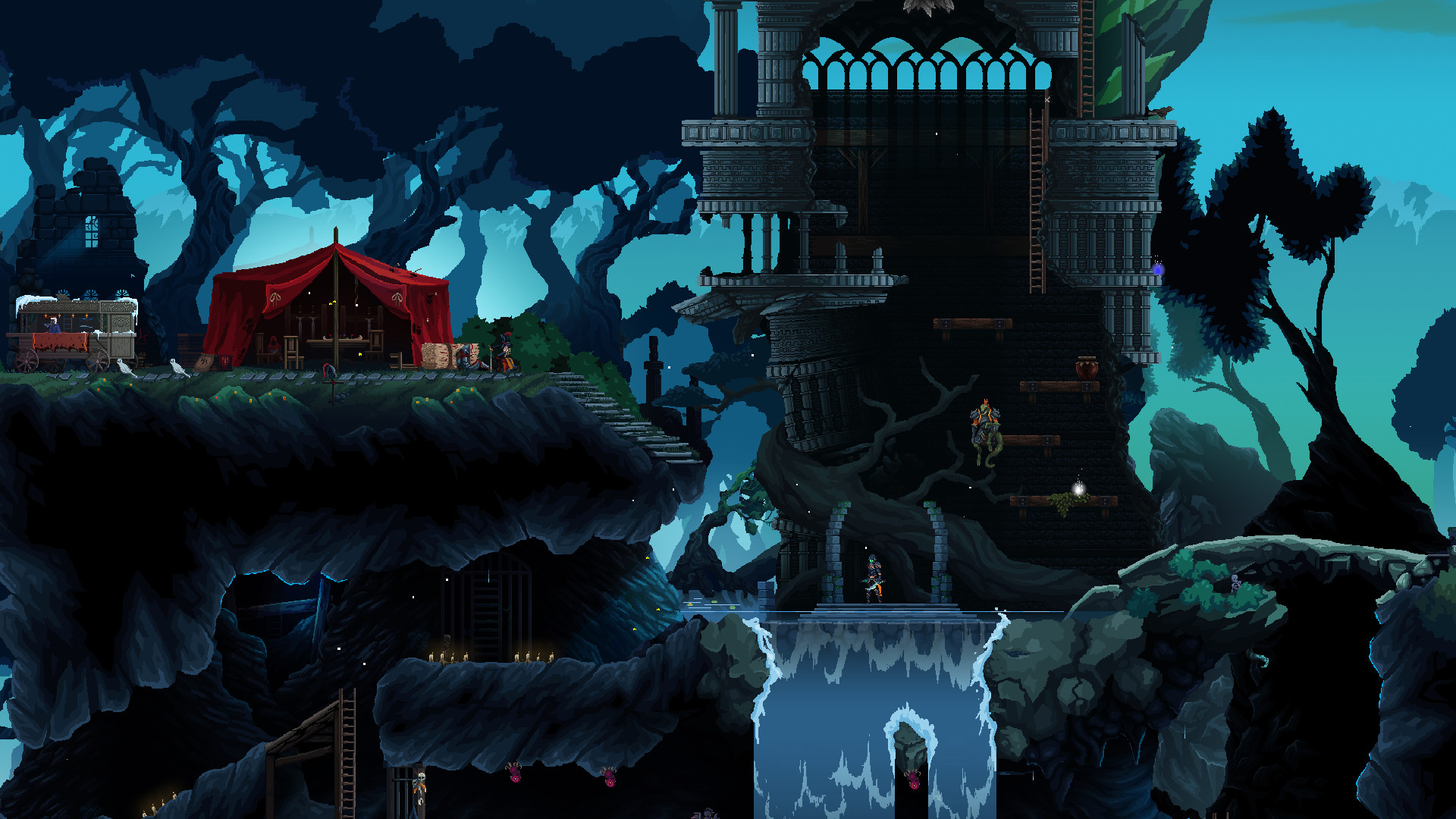Have you tried… getting to know the Grim Reaper in 2D Soulslike Death's Gambit: Afterlife?
How Afterlife overhauls and expands just about everything in Death's Gambit

Living forever: not all it's cracked up to be. Dying all the friggin' time: also not great. Death's Gambit: Afterlife is about finding harmony between these two extremes – navigating a world cursed by the pursuit of eternal life while also trying to personally visit Death himself as infrequently as possible. Of course, you will inevitably get well acquainted with the grim reaper because Death's Gambit is a proud and punishing Soulslike, and its free Afterlife DLC has only added more things to kill you on top of polishing up the whole dang game.
Originally released back in 2018 and now effectively re-released with major additions and improvements, Death's Gambit is a 2D action RPG that leans into two genres colloquially named after the games that defined them: Soulslikes and Metroidvanias. You know what that means: upgrades to find, areas to unlock, epic bosses to slay, and stamina to manage. This genre mashup doesn't inherently indicate a steep difficulty curve – there are easy Soulslikes and Metroidvanias out there, after all – but Death's Gambit certainly won't disappoint if you do want something that'll kick your ass.
I missed Death's Gambit the first time around but finally picked it up when Afterlife came out, and then I played it for eight hours in one sitting. It's not just good; it's exactly my kind of good, the sort of game that could pass for a chimera purposely made from all the things I love about games. Combat is weighty and satisfying with deliberate animations, flashy abilities, and reactive parries. The grimdark world is beautiful and packed with smaller stories fleshing out the tragic characters supporting the overarching plot. At the same time, Death's Gambit has some silly and off-beat moments that give it time to relax and have fun, just as statues give you a moment to rest and collect yourself – often literally, making sure your entrails don't become your extrails. There are talking rats, snail merchants, you catch Death stammering "Yes, chef" in a high-end kitchen. The tone is altogether somber, but not oppressively so. Death's honestly a pretty nice guy.
Welcome to the Afterlife

Jean Canellas and Alex Kubodera, the co-founders and lead developers of Death's Gambit developer White Rabbit, tell me over Zoom that the game initially focused more on combat and RPG stuff, and it shows. Death's Gambit is remarkably in-depth. You've got a range of stats to level, seven starting classes plus a total of four skill trees that let you dual-class later on, dozens of weapons that build out several core types, and equipment slots for everything from helmets and boots to auras and spells.
Building your ideal version of the protagonist, Sorun, is fun and engrossing. Will you become a tank with an immovable shield, a blood knight who trades health for power, or a slippery thief with a dagger for every occasion? I've been focusing on Finesse and using weapons like scythes and spears, but I could easily reset my stats and try the greatsword life if I wanted to. I don't, though, because I just blew all my levels to reach 40 Finesse so I could wield the really cool scythe dropped by the undead king I killed earlier. I'm working to even out my build with some more health, stamina, and cooldown reduction, but for now I'm getting carried by a busted combination of Death Acolyte and Blood Knight abilities that make me truly immortal for 15 seconds, and how's that for ludonarrative dissonance.
With the release of Afterlife, White Rabbit worked to bring more Metroidvania elements to the game – one of the many, many changes fueled by player feedback. Not having played the original, I can't exactly spot all the differences, but I can tell you that this game nails the quintessential Metroidvania markers. Sometimes you'll find a boss you were clearly meant to fight earlier and gleefully paper the walls with it using your over-leveled build. Other times you'll run headlong into an enemy so out of your league that one hit from it will humble your unborn grandkids. And unlocking a new ability – the double-jump, the air dash, and so on – sets off 10 light bulbs in your head at once. "Oh sweet, I can get this chest now, and reach that ledge to open that door, and hopefully fill out the last blank snippet of the map for that area, and–"
And that, reader, is why I played for eight hours in one sitting. Death's Gambit: Afterlife presents you with so much cool stuff to test and discover and overcome. It's an incredibly demanding experience but it gives you plenty of freedom within its unmoving rules, and that keeps me coming back for more.
Weekly digests, tales from the communities you love, and more
Just as importantly, it was clearly made by people who not only love the games that inspired them – and that list includes Dark Souls, Sekiro, Hollow Knight, Metroid, and more – but also understand what makes them work.
What makes a good Soulslike

"I wouldn't say it's the difficulty," Canellas says of Soulslikes. "You could definitely make an easy Soulslike and it would still be a Soulslike. To me, it's the stamina system, the weighty feel of combat. Those are some of the biggest things that stand out to me. Many other combat games just focus on making sure your attack comes out on frame one and feels really good and really satisfying. No, Dark Souls is about methodical combat.
"Meanwhile Metroid, for example, focuses on exploration. And I say that even though Metroid Dread kind of focuses a lot more on combat than the other Metroids, but yeah, Metroid is 100% all about exploration. You're always rewarded for exploring. You don't get more missiles for beating a combat encounter, you get them for exploring and finding them hidden in the world."
In modern Metroidvanias like Hollow Knight and Ori and the Will of the Wisps, finding the double-jump ability will let you unlock new areas. In Dark Souls, finding an iron key will open another path forward. Death's Gambit: Afterlife manages both, which is key to what makes its mix of genres so compelling. You get that loud video game-y direction interwoven with a more subtle level design that leverages the intrigue of the world. That experience of bumbling and stumbling through a threatening environment undoubtedly played a big part in the success of all these games.
"I think the defining factor is definitely the stakes," Kubodera adds. "As you dwindle through your health potions, do you try to look for a bonfire or go straight to the boss? Having those moments of risk and reward is hugely important."

Death's Gambit: Afterlife takes that core tenet of risk and applies it in some innovative, elegant ways that, even as a big fan of this genre, I've never seen. It uses a similar Estus Flask-like health system that runs on Phoenix Plumes, for example, but there are many more wrinkles to it. You can equip different plumes for varying effects – a faster heal animation, status recovery, and so on. You can reduce your maximum Plume count at a checkpoint to increase your damage output, directly trading health for power. And when you die, instead of losing all your XP as Soulslike custom seems to dictate, you leave a single Plume on the ground. This creates the nightmare scenario of having even less healing available each time you take on a challenge that already killed you, but you're pushed forward by the knowledge that you can simply pick up your lost Plume or, if you're really in a pinch, reclaim it from a checkpoint by spending a level worth of XP.
The road to Death's Gambit was paved with unique ideas like this – as well as Canellas and Kubodera occasionally sacrificing their own salaries to pay their collaborators – and Afterlife builds on all of that with lessons and improvements born of hindsight and a less stressful schedule. A small team spent years improving something special that they already spent years on, and then they updated it for free. Death's Gambit: Afterlife is the definitive version of an excellent game and it brings a true ending to Sorun's story as well as many long years of development. Kubodera teased that there is something more in store for Death's Gambit, but Canellas also says they'd like to work on something all-new in a different genre, so who knows what the future holds. All I know is that I can't wait to sink more of my time into Death's Gambit: Afterlife, and after sleeping on it for too long, I'll be at the front of the line to play whatever White Rabbit does next.
Death’s Gambit: Afterlife is now available on Nintendo Switch and PC, and the update will be coming to PS4 later this year. If you already owned the 2018 version of Death's Gambit on PC or PS4, you can get the Afterlife update for free.

Austin has been a game journalist for 12 years, having freelanced for the likes of PC Gamer, Eurogamer, IGN, Sports Illustrated, and more while finishing his journalism degree. He's been with GamesRadar+ since 2019. They've yet to realize his position is a cover for his career-spanning Destiny column, and he's kept the ruse going with a lot of news and the occasional feature, all while playing as many roguelikes as possible.


